The Products Derived From Food Waste
Food waste refers to any edible food material that is discarded, lost, or uneaten. It can occur at any stage of the food supply chain, including production, processing, distribution, and consumption. Food waste is a significant global problem that has social, economic, and environmental implications.
According to the United Nations Food and Agriculture Organization (FAO), approximately one-third of all food produced in the world is wasted each year, which equates to about 1.3 billion tons. There are many reasons why food waste occurs, including overproduction, spoilage, expiration dates, cosmetic standards, and consumer behavior.
Food waste has a negative impact on the environment because it contributes to greenhouse gas emissions, wastes water and energy resources, and takes up landfill space. Reducing food waste is essential for a more sustainable future. It can be achieved through better planning, improved production and distribution practices, changes in consumer behavior, and the use of technology to track and manage food waste.
The Products Derived From Food Waste
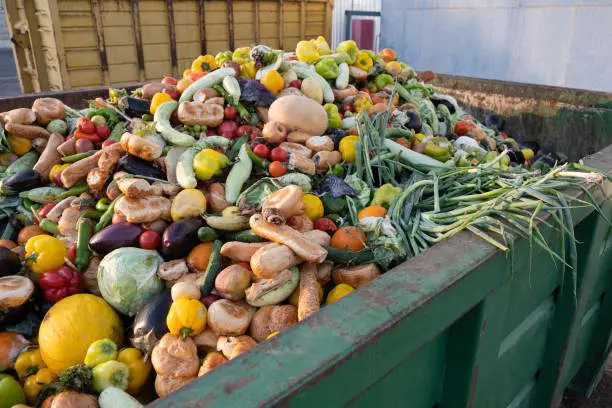
By reducing food waste, we can conserve resources, decrease greenhouse gas emissions, and help address food insecurity. Food waste is a major environmental and economic problem, but there are many innovative ways to use it as a resource. Here are some examples of products derived from food waste:
(1) Biogas
Food waste can be used to produce biogas through a process called anaerobic digestion. Biogas can be used as a renewable energy source to generate heat and electricity. Biogas from food waste is a renewable energy source that is produced through the anaerobic digestion of organic material such as food waste. Anaerobic digestion is a natural process where microorganisms break down organic material in the absence of oxygen, producing biogas as a byproduct.
To produce biogas from food waste, the waste is first collected and transported to a biogas plant. At the plant, the food waste is mixed with water and heated to around 35-40°C to promote the growth of anaerobic bacteria. The mixture is then transferred to an anaerobic digester, where the bacteria break down the organic material and produce biogas.
The biogas produced from food waste typically contains around 50-70% methane, which can be used as a fuel for electricity generation or for heating. The remaining gas is mainly carbon dioxide, which can also be captured and used in various industrial processes.
Biogas production from food waste has several benefits. It provides a renewable source of energy, reduces greenhouse gas emissions by diverting waste from landfills, and reduces the need for fossil fuels. In addition, the process of anaerobic digestion can also produce a nutrient-rich fertilizer that can be used to improve soil quality.
However, there are also challenges associated with biogas production from food waste, including the cost of transportation and processing, the potential for odor and noise pollution, and the need for careful management of the process to ensure optimal conditions for the anaerobic bacteria.
(2) Animal feed
Some types of food waste, such as vegetable scraps and grains, can be used as animal feed. This reduces the demand for new feed and helps to reduce the environmental impact of livestock farming.
Animal feed can be made from food waste that is safe and appropriate for animals to eat. This approach can help to reduce food waste while also providing a cost-effective and sustainable source of feed for livestock. There are different ways to make animal feed from food waste, depending on the type and condition of the waste. Some common methods include:
Drying and grinding: This method involves drying the food waste and grinding it into a powder or pellet form that can be mixed with other feed ingredients. This is a common method used for making feed from fruit and vegetable waste.
Fermentation: Fermenting food waste can create a nutrient-rich feed that is more easily digestible for animals. This method is commonly used for making feed from food waste such as spent grains from beer production.
Blending: Blending food waste with other feed ingredients such as grains, soy, and minerals can create a balanced and nutritious animal feed.
It’s important to note that not all food waste is suitable for animal feed. The waste must be properly processed and free of harmful contaminants such as pesticides or heavy metals. In addition, there may be regulations and guidelines regarding the use of food waste for animal feed, so it’s important to consult with local authorities and experts to ensure safety and compliance.
Read Also: Consumable Waste Complete Management Guide
(3) Compost
Food waste can be composted to produce nutrient-rich soil that can be used to grow new crops. This reduces the need for chemical fertilizers and helps to improve soil health. Composting is a natural process in which microorganisms, such as bacteria and fungi, break down organic materials into a nutrient-rich soil amendment.
Composting food waste is an effective way to reduce the amount of waste that goes into landfills and also creates a valuable resource for improving soil health. Here are some steps to compost food waste:
Collect food waste: Collect fruit and vegetable scraps, coffee grounds, tea bags, eggshells, and other food waste in a compost bin or container. Avoid meat, dairy, and oily foods as they may attract pests and create odor.
Add dry materials: To balance the moisture content in the compost, add dry materials such as leaves, straw, sawdust, or shredded paper. Aim for a ratio of 3 parts brown (dry) materials to 1 part green (food waste) materials.
Mix and turn: Mix the compost regularly to ensure proper aeration and to speed up the composting process. Use a pitchfork or shovel to turn the compost every week or two.
Monitor moisture: Compost needs moisture to decompose, but too much moisture can create odor and attract pests. Keep the compost moist but not too wet.
Wait for it to mature: The composting process takes several months to a year, depending on the temperature, moisture level, and the types of materials used. Once the compost is dark and crumbly, it is ready to use as a soil amendment.
Composting food waste not only diverts waste from landfills but also creates a valuable resource for gardening and agriculture. The resulting compost is rich in nutrients, helps retain moisture in the soil, and improves soil structure.
(4) Biofuels
Food waste can be converted into biofuels such as ethanol and biodiesel. These can be used as a renewable alternative to fossil fuels. Biofuels made from food waste can be a sustainable and environmentally friendly alternative to fossil fuels. Food waste is a significant problem globally, with around one-third of all food produced for human consumption being lost or wasted every year.
By converting food waste into biofuels, we can reduce greenhouse gas emissions, reduce the amount of waste sent to landfills, and create a new source of energy. There are several types of biofuels that can be produced from food waste, including biodiesel, biogas, and ethanol.
Biodiesel can be made from waste cooking oil, while biogas is produced by anaerobic digestion of organic waste, including food scraps. Ethanol can be produced from food waste such as corn and sugarcane. Producing biofuels from food waste has several advantages.
For example, it can help reduce greenhouse gas emissions by diverting organic waste from landfills, where it can produce methane gas, a potent greenhouse gas. It can also provide a source of renewable energy and reduce our dependence on fossil fuels.
However, there are also some challenges associated with producing biofuels from food waste. For example, the cost of producing biofuels can be high, and there may be issues with the availability and quality of feedstocks. Additionally, some critics argue that producing biofuels from food waste may encourage food waste by creating a market for it.
Producing biofuels from food waste has the potential to be a sustainable and environmentally friendly solution to our energy needs. However, careful consideration should be given to the potential benefits and drawbacks of this approach.
(5) Food ingredients
Some food waste can be processed into ingredients for new food products. For example, juice pulp can be used to make fiber-rich snacks, and whey protein can be extracted from cheese production waste. Food waste can be repurposed into a variety of useful ingredients, including:
Vegetable and fruit scraps: Scraps such as carrot tops, onion skins, and apple cores can be used to make vegetable and fruit stocks, which can be used as a base for soups, stews, and sauces.
Citrus peels: Citrus peels, such as orange and lemon peels, can be used to make citrus zest, which can be used to add flavor to baked goods, sauces, and dressings.
Bread crumbs: Stale bread can be dried and crumbled into bread crumbs, which can be used as a coating for fried foods, as a topping for casseroles, or as a binder for meatballs or veggie burgers.
Nut pulp: After making nut milk, the leftover nut pulp can be used as a base for homemade energy bars, or added to smoothies for extra fiber.
Vegetable pulp: Similar to nut pulp, vegetable pulp left over from juicing can be used in baking, added to soups, or used as a base for veggie burgers.
Broth: Leftover bones and meat scraps can be used to make a flavorful broth, which can be used as a base for soups, stews, and sauces.
Pickles: Leftover pickle brine can be used to make a salad dressing or marinade, or to add flavor to cocktails.
These are just a few examples of the many ways that food waste can be repurposed into useful ingredients. By reducing food waste and finding new uses for leftover ingredients, we can help reduce our impact on the environment and create a more sustainable food system.
Read Also: Ways To Generate Income From Electronic Waste (E-Waste)
(6) Fertilizers
Food waste can be processed into fertilizers that can be used to improve soil health and crop yields. Fertilizers can be produced from food waste through a process called composting. Composting is the natural decomposition of organic materials, such as food waste, into a nutrient-rich soil amendment called compost.
Compost can be used as a fertilizer to enhance soil health and fertility, which can ultimately lead to healthier plants and higher crop yields. To produce fertilizer from food waste through composting, the following steps can be followed:
Collect food waste: Collect food waste from households, restaurants, or food processing plants.
Sort and prepare the waste: Remove any non-organic materials, such as plastic or metal, from the food waste and chop it into smaller pieces to speed up the composting process.
Build the compost pile: Create a compost pile by layering the food waste with other organic materials, such as leaves or grass clippings, to provide carbon and nitrogen for the microbes that break down the waste.
Manage the compost pile: Manage the compost pile by keeping it moist, turning it regularly to aerate it, and monitoring its temperature to ensure that it reaches and maintains the ideal temperature for composting.
Harvest the compost: After several months, the compost will be ready to harvest. It will have a dark, crumbly texture and a rich, earthy smell.
Use the compost as fertilizer: Use the compost as a fertilizer by spreading it on gardens, farms, or lawns to improve soil health and fertility.
Producing fertilizer from food waste through composting is an environmentally friendly solution to reduce waste and improve soil health. It can also reduce greenhouse gas emissions, as food waste in landfills produces methane, a potent greenhouse gas.
(7) Cosmetics
Some cosmetic companies are using food waste as ingredients in their products. For example, coffee grounds can be used as an exfoliant in skincare products. Cosmetics made from food waste are a growing trend in the beauty industry. The idea behind this concept is to reduce waste and create sustainable beauty products using ingredients that would otherwise go to waste. Here are some examples of cosmetics that can be made from food waste:
Fruit and Vegetable Extracts: Fruits and vegetables that are slightly past their prime or have blemishes can be turned into extracts that can be used in skincare products. For example, extracts from watermelon, papaya, and pumpkin are commonly used in skincare products to improve skin tone and texture.
Coffee Grounds: Coffee grounds are often discarded after brewing, but they can be used as an exfoliant in body scrubs. The caffeine in coffee grounds can also help improve circulation and reduce the appearance of cellulite.
Avocado Oil: Avocado oil is extracted from the pulp of avocados and can be used in a variety of skincare products. The oil is rich in antioxidants and vitamins A, D, and E, which can help hydrate and nourish the skin.
Beeswax: Beeswax is a natural wax that is often used in lip balms and skincare products as an emulsifier. Beeswax can be sourced sustainably from beekeepers who harvest it from beehives.
Rice Water: Rice water is the starchy water left over after rinsing rice. It has been used for centuries in Asia as a natural remedy for skin and hair care. Rice water can be used as a facial toner or hair rinse to improve the appearance of the skin and hair.
By utilizing food waste in cosmetics, we can reduce waste and create products that are better for the environment. It’s a win-win for both the beauty industry and the planet. These are just a few examples of the many products that can be derived from food waste. By finding new uses for food waste, we can reduce its environmental impact and create new economic opportunities.
Read Also: Unlocking Creativity with Imaginext Toys
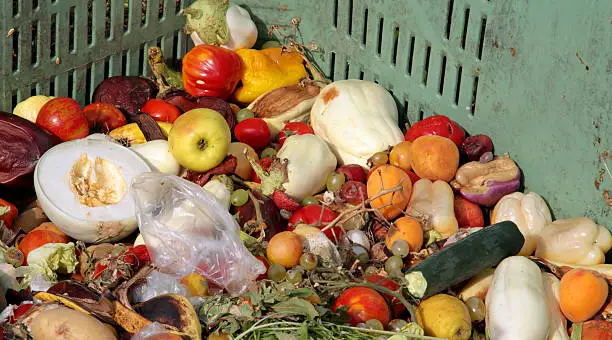
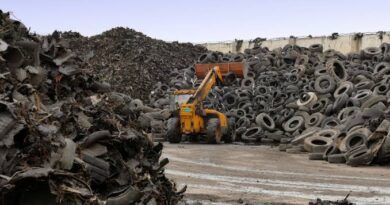
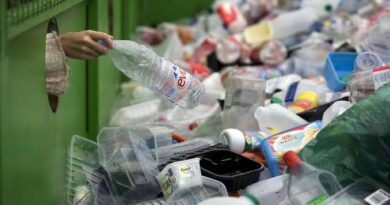
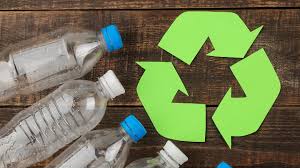
Interesting for a very long time
Thank you so much and we are glad that you find our article very helpful